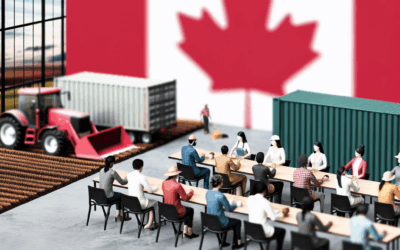Electoral reform in Canada has been a topic of significant debate and discussion in recent years. The current first-past-the-post (FPTP) voting system, used in federal elections, has faced criticism for its inability to accurately reflect the popular vote and for creating disparities between votes cast and seats won. Advocates for reform argue that alternative systems, such as proportional representation or ranked ballots, could lead to fairer outcomes and greater voter engagement. This article explores the history of Canada’s electoral system, the arguments for and against reform, the proposed alternatives, and the challenges of implementing change. By examining these aspects, we aim to provide a comprehensive understanding of why electoral reform remains a pressing issue in Canadian politics.
The History of Canada’s Electoral System
Canada’s first-past-the-post system has been in place since Confederation. Under this system, the candidate with the most votes in a riding wins the seat, regardless of whether they secure a majority. While this method is straightforward, it often results in a party winning a majority of seats without a majority of the popular vote. Historically, this has led to debates about the fairness of the system, particularly in elections where the distribution of votes does not align with the distribution of seats. Over the years, various commissions and committees have examined the system, but significant changes have yet to be implemented.
Arguments for Electoral Reform
Proponents of electoral reform argue that the current system undermines democratic principles by disproportionately favoring larger parties and leaving smaller parties underrepresented. They highlight that FPTP can lead to “wasted votes,” where votes for losing candidates or excess votes for winning candidates do not contribute to the final outcome. Reform advocates also emphasize that alternative systems, such as proportional representation, could ensure that the composition of Parliament more accurately reflects the will of the electorate. Additionally, they argue that reform could increase voter turnout by making citizens feel their votes have a greater impact.
Proposed Alternatives to FPTP
Several alternatives to the first-past-the-post system have been proposed. Proportional representation (PR) is one of the most discussed options, where seats are allocated based on the percentage of votes each party receives. Another option is the ranked ballot system, also known as instant-runoff voting, where voters rank candidates in order of preference, and votes are redistributed until a candidate achieves a majority. Mixed-member proportional representation (MMPR) combines elements of FPTP and PR, allowing voters to cast a ballot for both a local candidate and a party. Each of these systems has its own advantages and challenges, and their suitability for Canada remains a topic of debate.
Challenges to Implementing Reform
Despite the arguments in favor of electoral reform, implementing change is no easy task. One major challenge is the lack of consensus on which alternative system to adopt. Different parties and regions may have conflicting preferences, making it difficult to reach a unified decision. Additionally, changing the electoral system would require significant political will and public support, as well as amendments to the Canada Elections Act. Critics of reform also argue that the current system provides stable majority governments, which they believe are more effective at implementing policies. These challenges highlight the complexity of the issue and the need for careful consideration.
Public Opinion and Political Will
Public opinion on electoral reform is divided, with some Canadians strongly advocating for change and others preferring to maintain the status quo. Political parties have also taken varying stances, with some committing to reform and others opposing it. The issue gained prominence during the last federal election, when the governing party promised to explore alternatives to FPTP. However, the lack of follow-through on this promise has led to criticism and skepticism. For reform to move forward, it will require not only public support but also a concerted effort from political leaders to prioritize the issue and engage in meaningful dialogue.
Electoral reform in Canada is a complex and multifaceted issue that touches on the very foundations of democracy. While the first-past-the-post system has been a longstanding feature of Canadian elections, its limitations have sparked calls for change. Proponents of reform argue that alternative systems could lead to fairer outcomes and greater voter engagement, but implementing such changes is fraught with challenges. From the lack of consensus on an alternative system to the political will required to enact reform, the path forward is far from straightforward. As Canadians continue to debate the future of their electoral system, it is clear that any decision will have profound implications for the country’s democratic process. The conversation around electoral reform is not just about how we vote, but about how we ensure that every voice is heard and represented in Parliament.



